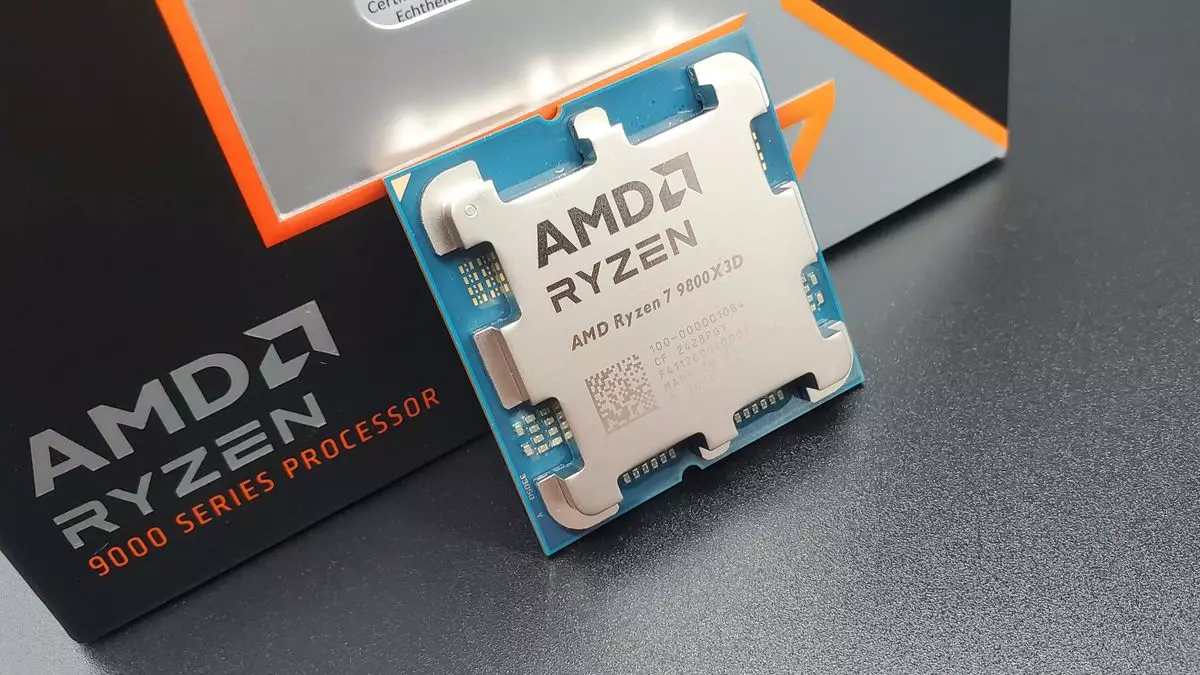In the fast-evolving world of computing hardware, the competition between AMD and Intel remains fierce, particularly in the CPU market. As we move into 2024, the recent introductions of new CPU line-ups from both companies have stirred excitement and marked significant developments in the industry. While graphics cards like Nvidia’s latest offerings capture the spotlight, the enhancements to processor technology deserve equal attention. This article aims to delve into the current offerings from AMD and Intel, exploring their performance, market impact, and future prospects.
Recent months have heralded the arrival of Intel’s Core Ultra 200S ‘Arrow Lake’ CPUs and AMD’s highly anticipated 9000-series ‘Zen 5’ processors. The performance and reception of these processors reveal a pronounced contrast in strategies and consumer response. AMD has made headlines with the launch of its Ryzen 7 9800X3D, which has reportedly achieved remarkable sell-out numbers, particularly critical during the holiday shopping season. AMD CEO Dr. Lisa Su highlighted that this product launch experienced “the highest sell-out in many years,” underscoring a robust demand that has led to challenges in maintaining sufficient stock levels.
In contrast, Intel’s latest offerings, while technically proficient, have been perceived as underwhelming. The Core Ultra 200S line seems to lack the innovation and performance leap that enthusiasts had hoped for. Moreover, earlier models in Intel’s 13th and 14th Gen lines were marred by stability issues, fueling speculation about the company’s ability to keep pace with AMD’s advancements.
The Importance of Supply and Demand
The dynamic between supply and demand illustrates a critical aspect of the CPU market. While AMD is celebrating high sell-out rates, it’s essential to recognize that such figures might also correspond to supply constraints. The recent challenges faced by Nvidia regarding the RTX 5080 and RTX 5090—often cited as a “paper launch” due to limited availability—serve as a reminder that popularity does not always equate to robust supply chains. Despite this, AMD’s claims of strong product adoption seem to hold merit, particularly in light of ongoing delays in restocking popular CPUs like the Ryzen 7 9800X3D.
Dr. Su’s comments about strong January shipments signal that the company is actively working to bridge the gap between demand and availability. Although stock shortages provide an exciting sense of urgency for consumers, they also indicate the need for AMD to enhance its production capabilities to meet consumer expectations better.
When evaluating the performance landscape of these CPUs, AMD appears to have gained a favorable edge, particularly in gaming scenarios. The Ryzen 7 9800X3D stands out as a leading CPU choice, outperforming Intel’s alternatives by a significant margin. For gamers, this is an attractive proposition, prompting a shift in purchasing behavior towards AMD’s offerings.
On the other hand, Intel’s recent processor releases, while demonstrating efficiency, have not kept pace with the raw performance metrics that players seek in a gaming-centric environment. The adoption of Intel’s Core Ultra 200S line has been tepid due in part to the lack of compelling improvements over previous generations. Coupled with the lingering instability issues of prior generations, the overall sentiment in the market seems to tilt towards AMD for high-performance computing needs.
In the mobile CPU market, AMD has introduced the AI 300 ‘Strix Point’ series, making waves in both laptops and portable gaming devices, like the OneXPlayer OneXFly F1 Pro. Here lies a burgeoning segment where AMD is leveraging its technology to capture attention beyond traditional desktops. While Intel has its own mobile offerings, specifically the Core Ultra 200V ‘Lunar Lake,’ the performance disparity between these products becomes evident when considering graphics capability and gaming performance.
Both companies are navigating a highly competitive landscape, yet AMD appears to be better positioned as it demonstrates stronger performance on the mobile front. The close competition in this segment suggests that consumers will benefit from ongoing innovation and improvements from both manufacturers.
As we chart the course for the remainder of the year, both AMD and Intel have significant room for progress and innovation. AMD must prioritize ensuring more consistent availability of its processors to capitalize on the demand observed in recent months. For Intel, a clear direction towards substantial performance enhancements in its upcoming line-ups will be critical to reclaiming market share.
The next few months will be telling, as AMD’s RX 9070 and RX 9070 XT graphics cards launch, and as Intel positions itself for future releases. It’s evident that both companies are at pivotal moments in their trajectories, and consumer response will shape the industry landscape for years to come.

